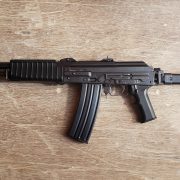Mass production of the famous AK-47 started in 1949, and by 1959 the design was completely finalized. Many countries tried to modernize it, some were successful, like Poland with its “Beryl” program, and some unsuccessful, like Hungary, which ended up ditching all changes in the late 70s to just make a standard AKM rifle they called “AK-63”. But there were modernization efforts that went beyond simple upgrades, and Zastava M21 is probably one of the best examples of that.
Zastava rifles @ TFB:
- [IWA 2022] Serbian Dragunov: The Zastava M91
- [SHOT 2022] Yes, It’s a .308 AK: Zastava M77/Z77 .308 AK-47
- TFB Review: Zastava M90 Rifle
- [IDEX 2021] Zastava Arms from Serbia at Yugoimport
Developed in the early 2000s, it was a pretty brave attempt to reimagine the AK. Chambered in 5.56, it was meant to combine Kalashnikov design with small-caliber high-velocity NATO ammo. But something went wrong, and these days, you don’t really see M21 anywhere, unless you’re serving in Serbian Army or spending the days of your life endlessly driving around an Iraqi desert.
What exactly went wrong with Zastava M21? What makes it different from any other AK variant? Let’s look at the rifle in detail.
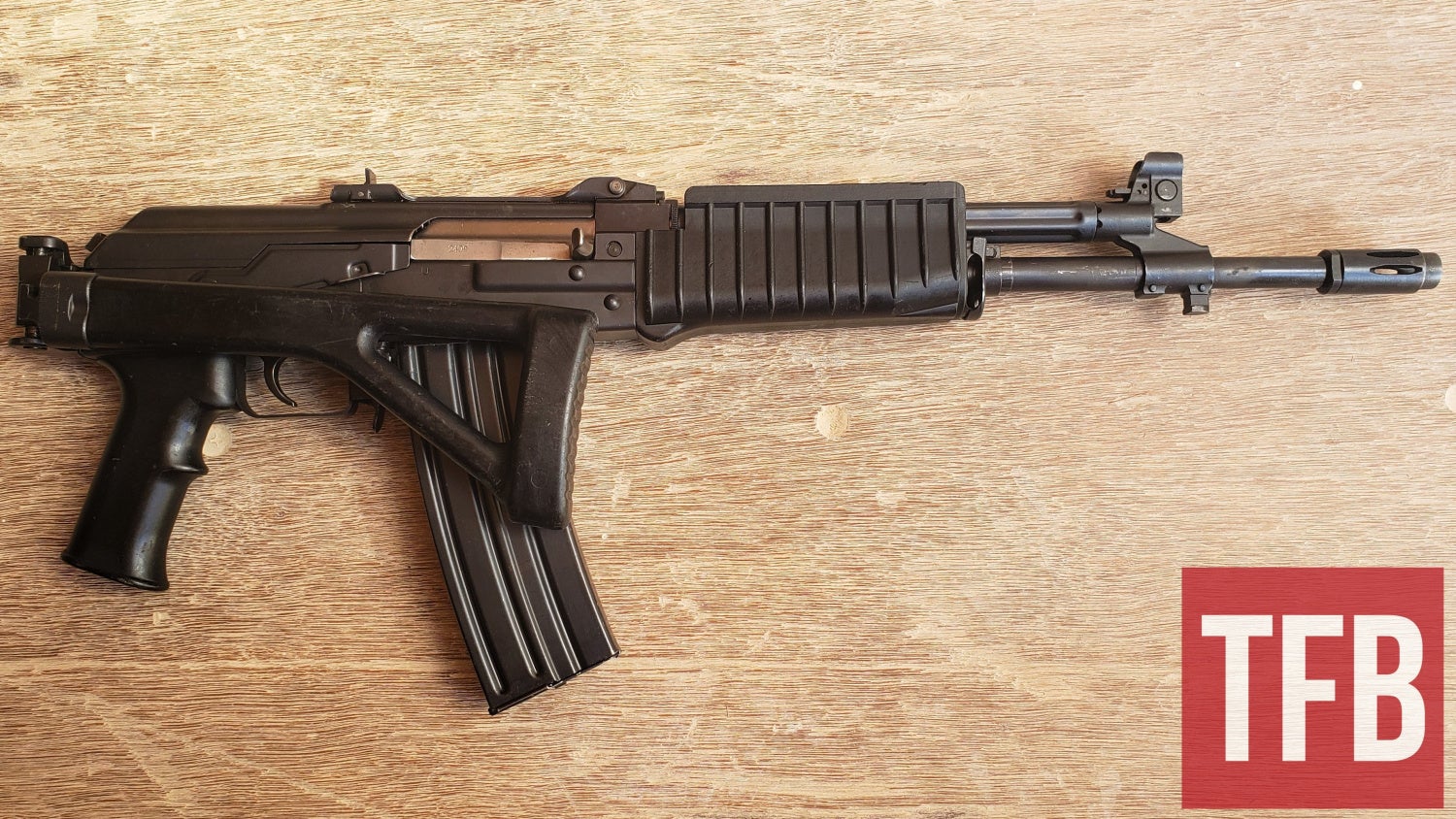
Zastava M21 with folded stock
Zastava M21, just like the Israeli Galil, has a stock that folds to the right side, which solves a serious problem that many AK rifles have. Normally, once you install an optic on the left side rail of the rifle, you can’t fold the stock, which is a significant drawback. On M21, you can have an optic and fold the stock.
Another similarity with Galil is the ambidextrous safety/fire selector on the left side of the rifle. It is not quite as ergonomic as AR-15, but still a big step forward compared to a standard AK.
To take the safety off, you move the selector towards you, which is a little counterintuitive but keeps the selector mechanism simple. Sometimes, this selector breaks off, but in this case, you still have a conventional lever on the right side.
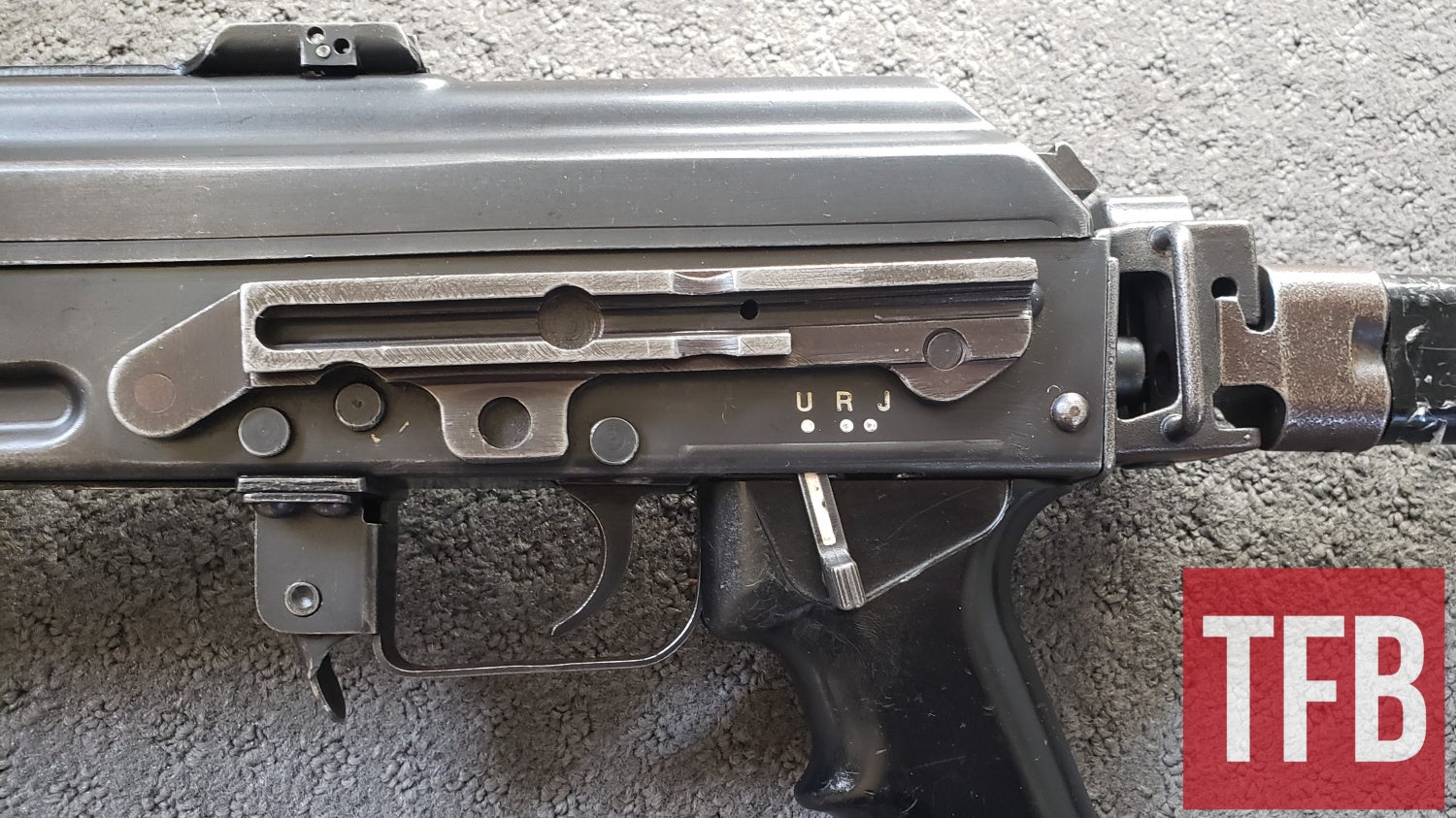
M21 ambidextrous safety lever and side rail for optics
The sights on Zastava M21 are located on the hinged receiver cover and are quite rudimentary. It has two flip-up rear sights stacked together, one is meant to be used within 300 meters, and the other one is for 500 meters. Both windage and elevation are adjusted with the front sight. Sights also have tritium inserts that make them visible in low-light conditions.
Since the 5.56×45 trajectory is very flat, you can get the job done with sights like that, but it is less than optimal, especially for a rifle without the Picatinny rail. Perhaps, the lack of Picatinny rail is the biggest drawback of this rifle.
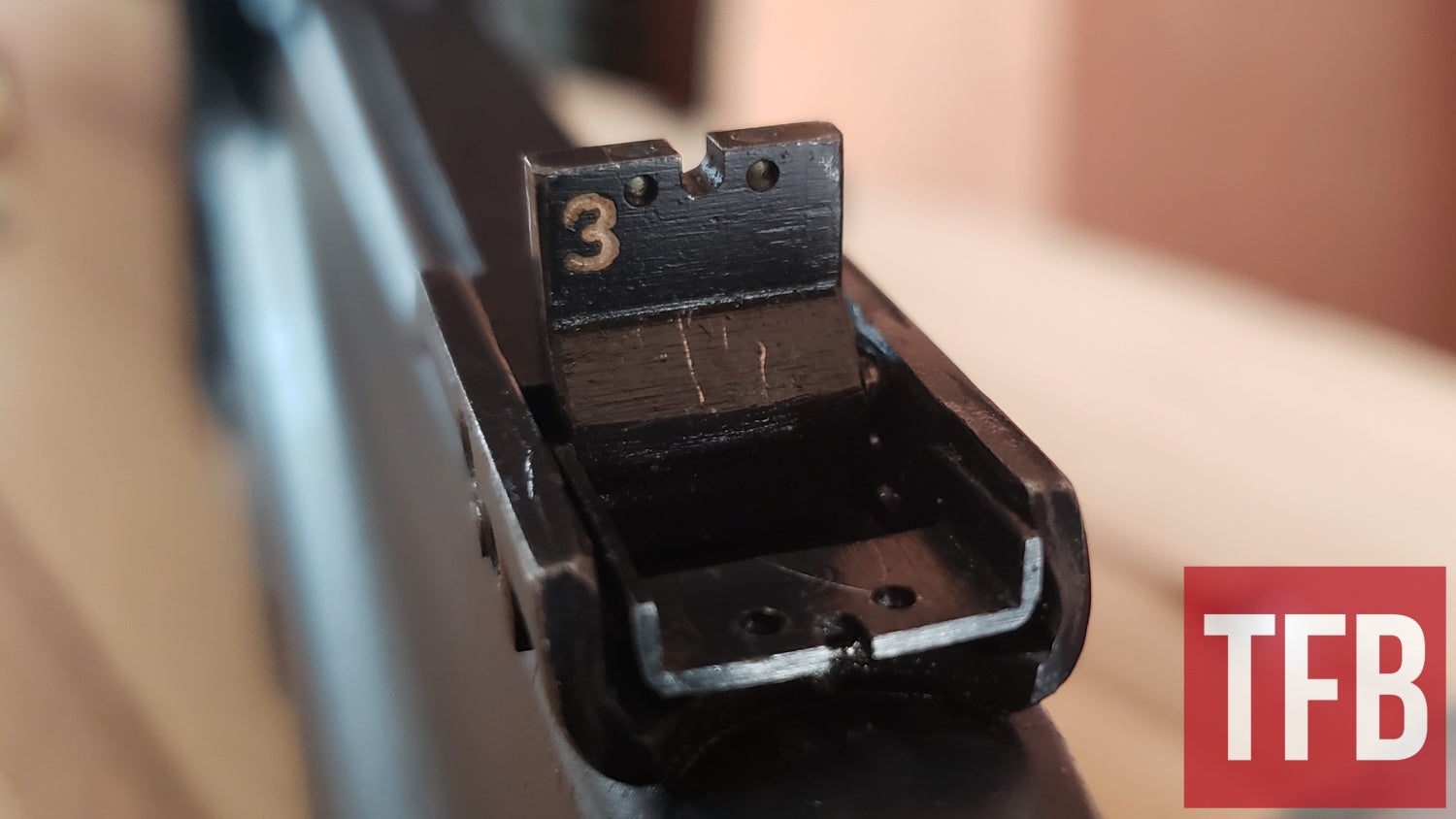
M21 rear sight
By the early 2000s, when M21 went into production, it was clear that there is no way around the universal adoption of the MIL-STD-1913 rail. SOPMOD had been around since the mid-90s, but for some reason, Serbian engineers decided to ignore this opting for a traditional side rail.
Another apparent problem with this rifle is its weight – over 4 kilograms (9 pounds). Essentially, M21 capabilities are more or less identical to a decent AR-15, but it weighs almost two pounds more. Why?
Because for M21, Zastava used their usual receiver with reinforced trunnion, which definitely didn’t help with weight reduction. But at the same time, the M21 is pretty well balanced so it doesn’t really feel heavy, especially compared to other Kalashnikov-type rifles.
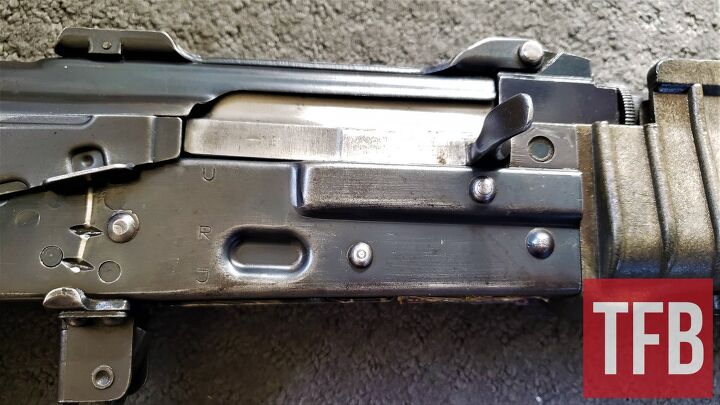
Reinforced trunnion of Zastava M21
My personal experience with Zastava M21 is quite limited. I first encountered them in Iraq and later in Africa. I repaired a good amount of those rifles, took them to the range, but never really used one for an extended period of time.
So, I asked the opinions of people who have more experience. The first was M., a stunning young lady who served in the Serbian Army and was issued Zastava M21. Here is what she said: “I love it! It is my favorite rifle, it feels light and most importantly, it feels like an extension of my body, which didn’t happen with other rifles we had.” M. was so impressed by the M21 that after finishing her service she got a tattoo of M21 to remind her of her favorite service rifle.
The second person I asked was a Kenyan security professional, who is currently supervising a project in one of the most dangerous African countries. M21 was also his favorite rifle: “it is light, the buttstock is very comfortable, the safety lever is pretty good, you can always feel in which position it is cause you have it under your thumb”.
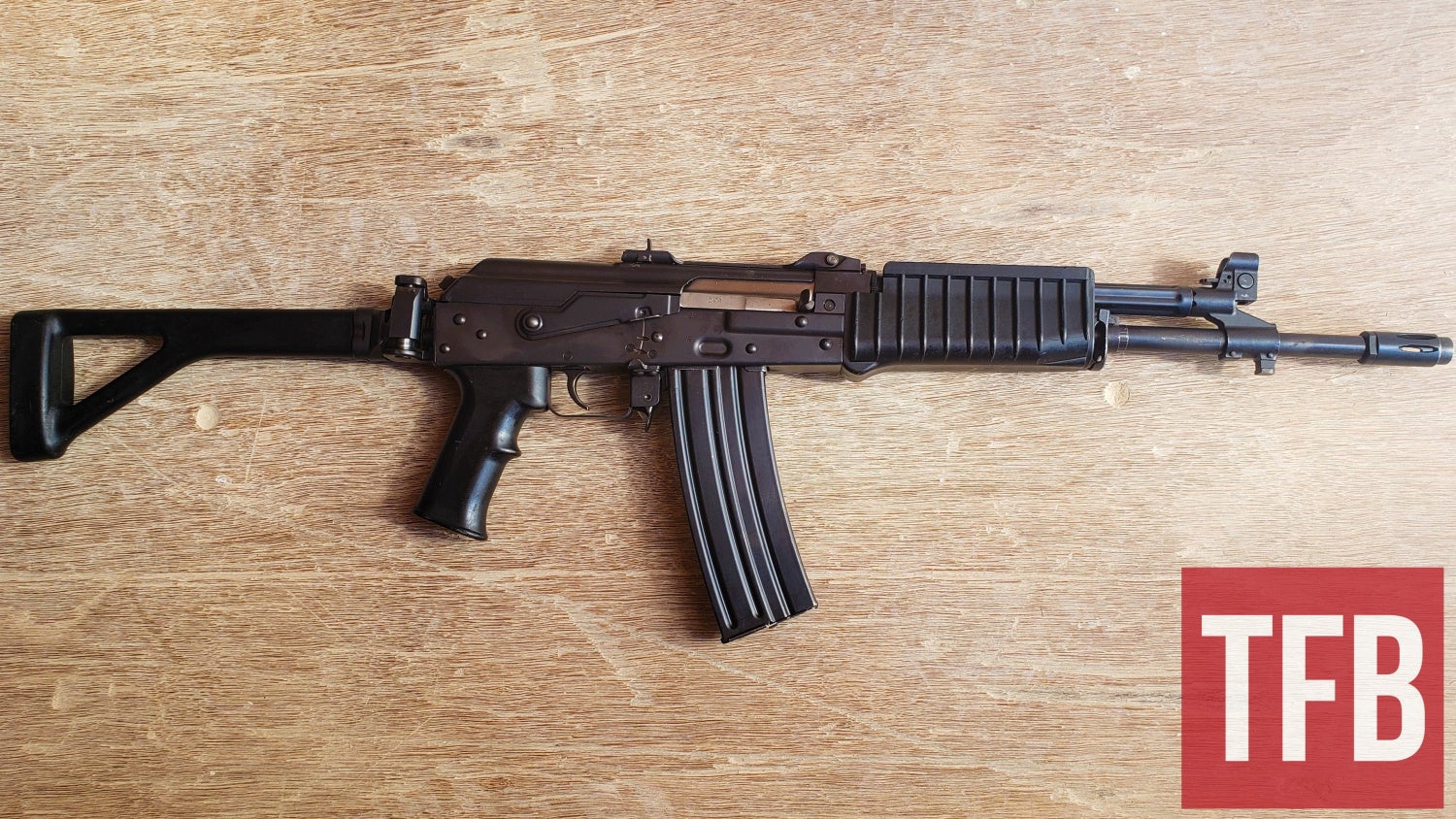
Zastava M21 right side view
So, it is a decent rifle, a bit heavy, and doesn’t have a Picatinny rail, but otherwise, there are no major problems. M21 was procured by the Serbian military, and multiple security companies around the world, primarily in Iraq, Bosnia, North Macedonia, Peru, Jordan, and Sudan. But why wasn’t it more popular?
I think the answer lies within the mindset of procurement officers and even the general public. When choosing a rifle, they pick between well-known and established platforms, for example, AR or AK. M21 was something in the middle, not exactly an AK, and not an AR. Without the legacy of either platform, customers were choosing more “purebred” options.
And it looks like Zastava Arms made a note of that. Their current 5.56 AK rifle offered on the US market is the M90, a classic Kalashnikov rifle in its purest form. At the same time, Zastava is developing a new generation of rifles called MCS M19, which addresses all the drawbacks of M21.
So, even if the M21 itself wasn’t very successful, it was a necessary step in the evolution of the Serbian AK platform. A rifle that helped Zastava to survive the hard times and keep the factory operational. That is why I think it deserves some respect and its own place in small arms history.


